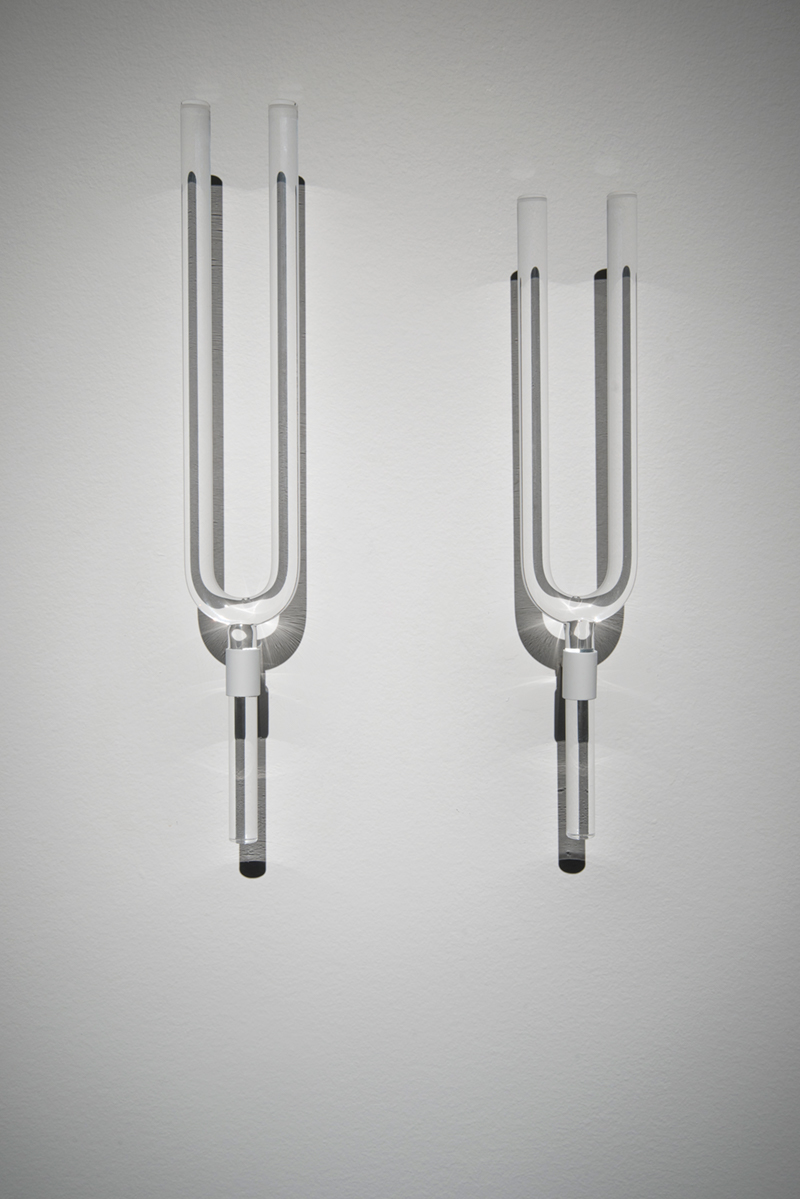

Pulse of the Planet, 2023, six glass tuning forks, audio recording, 2 minutes 9 seconds
Photo: John Dean
‘PULSE OF THE PLANET’,
ESKER FOUNDATION, CALGARY
JUN 27 - AUG 27, 2023
Co-curated by
Shauna Thompson & Peta Rake
ESKER FOUNDATION, CALGARY
JUN 27 - AUG 27, 2023
Co-curated by
Shauna Thompson & Peta Rake
The sound work Pulse of the Planet connects to several of O’Callaghan’s earlier performances in which breathing techniques were used to alter a performer’s physical and mental state. In this recent audio work O’Callaghan shifts focus from the lungs and respiratory system to an equally vital life force: the heart. The echoing percussion of a hydrophonic recording made by oceanographers under the crust of the earth attempts to draw audiences into an awareness of the similar rhythmic beating within their own chest.
The title of this work originated from a story told to the artist by her long-term collaborator Dr. Daniel Fornari, in which a recording was taken of seismic vibrations in the North Pacific Ocean by a group of his colleagues, which he referred to as the ‘pulse of the planet’. Previously, these vibrations emitted a constant low frequency of 7.83 hertz, but in recent years scientists have witnessed an increase to 8 hertz. The sound of the splitting of rock on the seabed has been speculated as both the very first sound of the planet, but also, potentially, its last.
The six glass tuning forks in this space each emit a perfect fifth—considered the most consonant or harmonious tone—and are all multiples of the accelerated frequency of the earth’s vibrations. This work then becomes a very visceral document that reinforces the complex planetary changes to which we are currently witness. At once simple and astounding, Pulse of the Planet also underscores the notion of the earth as a giant living organism and our innate and inextricable place within this system.
The artist would like to acknowledge William Wilcock, Jerome M. Paros Endowed Chair in Sensor Networks, School of Oceanography, University of Washington; Mark Stoermer, Center for Environmental Visualization, University of Washington; and John Delaney, Professor of Oceanography, University of Washington.